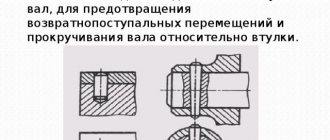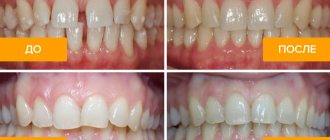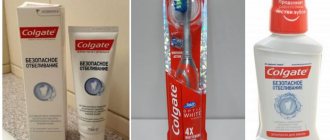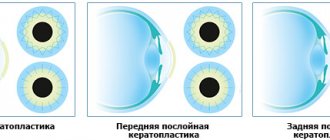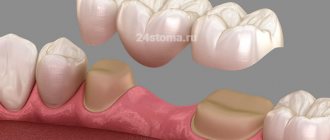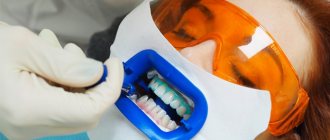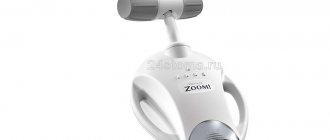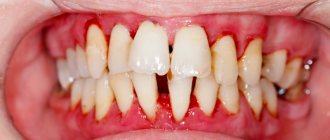Share on social media networks:
Currently, there are a lot of different cleaning and dishwashing products, such as fairies, but not all of them are equally safe. Many housewives prefer time-tested remedies, such as boiling or soda and hydrogen peroxide. These are universal helpers in any kitchen, and not only. They are used for medical and cosmetic purposes, to remove various stains from various surfaces. But today we will talk about their benefits in the kitchen, for example, how to use baking soda and hydrogen peroxide to clean dishes at home.
Benefits when used at home
Even before household products appeared, housewives used folk remedies to keep the kitchen clean. Popular among them were salt and peroxide. The household benefits of these products are as follows:
- effective fight against fat and old stains;
- environmental cleanliness;
- absence of harmful chemicals or allergens, which is important if there are children or allergy sufferers in the house;
- effective odor removal;
- disinfection, elimination of germs or bacteria;
- creating a whitening effect.
Baking soda in combination with oxygen peroxide helps remove complex stains and keep utensils and household appliances clean.
Traditional methods against soot in a frying pan
At home, you can use improvised means that are always available in the kitchen. They safely allow you to clean the inside of the frying pan from carbon deposits.
The prepared table will help determine contraindications for using a particular cleaning product for a specific type of frying pan.
Citric acid, vinegar and washing powder
The method involves use with different approaches.
- When the deposits on the dishes are fresh enough, lemon will do its job perfectly. To do this, you need to place the frying pan in the solution (for 1 liter of water - 1 tablespoon of citric acid). Boil for 20-30 minutes. Rinse with warm water.
- You can add vinegar to the prepared solution. Boil the frying pan in this water for 10-15 minutes. Turn off the heat and clean the dishes with a sponge after 2 hours. Then you can add washing powder to the same composition, bring to a boil, and leave for another 1 hour. Rinse with warm water.
- If there are damages and scratches on the frying pan, it is better not to boil the dishes. After each time of use, it is enough to wipe with a sponge soaked in a weak solution of acetic acid.
Important! The method cannot be used to clean aluminum pans, as well as dishes with damaged coating.
Coca Cola
The carbonated drink has long established itself as an excellent means for cleaning pots and pans. Just pour Coca-Cola into a bowl, bring to a boil and after 15 minutes turn off the stove. Leave it like this until it cools completely.
Important! The method is ideal for cleaning cast iron and stainless steel cookware.
Mustard powder
In Soviet times, mustard was valued as the most effective means of removing fat. To do this, a frying pan or saucepan was heated over a fire. They covered the bottom with mustard powder and scrubbed it off. After 20 minutes, wash off with water.
If it was not possible to wash it the first time, then the dishes were soaked in mustard solution for 40 minutes. Then washed again.
Cleaning and boiling in salt solution
Cleaning with salt is suitable for almost any dishware.
- Salt is poured onto the bottom of the frying pan (can be used together with sand).
- Lightly moisten and let stand for at least 2 hours. Sponge.
- If this does not help, you must immediately add water and boil. Perhaps this option will be more effective.
For your information! Do not apply to Teflon and ceramic cookware.
Using hydrogen peroxide, baking soda or soda ash
- Baking soda will help clean the pan from years of carbon deposits. Place a frying pan in a container with boiling water and soda. Reduce the heat to low and leave for 30 minutes. Then turn it off. Let it sit for another half hour. The dishes are washed with warm water.
- If this method does not help, add hydrogen peroxide and a few drops of dishwashing detergent to the soda solution. Leave for another 30-45 minutes. Rinse thoroughly with water several times. The method is actively used for cleaning non-stick frying pans.
Another option (always effective) is when glue and soap are added to the soda solution (see recipe above).
Ammonia and borax for cleaning cast iron surfaces
If food is badly burnt, the prepared solution will help to cope with the soot.
- For 300 ml of water, take ammonia and 12 g of borax.
- This mixture is poured onto the burnt surface.
- After 1 hour, the liquid is drained, the carbon deposits should easily come away from the surface.
- Kitchen utensils are washed and wiped.
Action
Baking soda and peroxide react to form a clear liquid. The molecules of this alkaline solution act on acids and eliminate them. Due to bactericidal, microbes or bacteria contained on the surface are eliminated.
The two products can also be combined with salted water or alcohol. These components are added to a solution of soda and peroxide to enhance the cleaning effect or add shine. However, they must be washed with gloves to avoid irritation on the skin.
How to use frying pans correctly
It is better to use each specific type of cookware in accordance with the operating instructions. Four simple rules are universal for any frying pan.
The product is presented on the market in a wide variety, differing in shape, size, purpose and coating.
- After purchasing, new utensils must be washed with detergent or soapy water.
- Some types of products are lubricated with vegetable oil before use.
- The size of the burner should not exceed the size of the bottom. An open flame will damage the outer coating of the walls.
- Sudden temperature changes are harmful to cookware and can change their properties. Do not put hot pans in the refrigerator and cool them with cold tap water.
General rules for cleaning cast iron cookware from carbon deposits
Cast iron is sufficiently stable, so using a brush to remove old burnt marks from the outside of the cookware will not harm the kitchen utensils. Of course, small scratches are unlikely to be avoided, but they clearly do not threaten significant damage.
It is important to remember that cast iron rusts easily, so do not soak cookware for too long.
Prolonged exposure to powerful chemicals, namely vinegar or soda, can destroy the structure of the material. Therefore, these substances must be used carefully.
The dishwasher is not suitable for cleaning cast iron from carbon deposits. Such exposure can cause corrosion.
As for heat treatment, cast iron is particularly resistant to high temperatures, so a frying pan made from this material can be safely boiled. However, you should refrain from sudden changes in temperature, otherwise the dishes may break.
To clean the inner surface, you cannot use aggressive household chemicals, since its particles eat into the walls of the dishes and then get into the food.
Using office glue
Add water to the dirty bowl so that it fills half of it. Add to it a small part of a pack of soda and a whole jar of PVA glue. Stir well and put the product on the fire. Bring to a boil, hold for another half hour, then leave to cool. After a couple of hours, the container should be freed from dirt and rinsed thoroughly.
In 3 liters of warm water, dissolve a third of grated laundry soap, 100 grams of soda, and 120 g of silicate glue. We load the dishes that require cleaning into the tank, put them on the fire and wait until they boil. It should boil for half an hour, and then you need to turn off the heat and let it cool.
If the dirt has not yet completely left behind, leave the products in the water. Or you can take the pans out to cool in the air. As soon as they become slightly warm, you should rinse them a couple of times under running water.
In a large bowl of warm water, dilute 100 g of PVA glue and 110 g of sodium carbonate. After stirring the ingredients until dissolved, add the burnt items into the bucket. Place the bowl on the stove and wait until it boils.
After the liquid boils, turn it off and leave to cool. The dirt should fall off and end up in the water, but if there is some layer left on the walls, it can be removed with a sponge.
The following method is suitable for very advanced cases. Take a large fireproof bucket and pour 8 liters of water.
Dissolve a glass of soda, grated half of soap, and a bottle of silicate glue in the liquid, stir thoroughly. Place the pot or frying pan that needs cleaning into the container and start boiling.
The boiling time will depend on the extent of the contamination: some pots will become clean in half an hour, while others will take an hour or more to regain their original appearance. When all the dishes are clean, turn off the heat and leave for another hour until it cools completely. After this, rinse the pans under running cool water.
Preparing to Clean an Old Cast Iron Frying Pan
Before you wash an old frying pan, you should determine what material the container is made of. This will help you choose the right cleaning method, the right product, and the right scraper. In most cases, old fat can be dealt with using improvised means available in every home. The most important thing is to choose a method that suits your existing pan. After all, the same product that cleans a cast iron container can ruin a Teflon or ceramic one.
Cast iron and aluminum containers are not afraid of harsh cleaning and tolerate the use of abrasive powders and rough paper clips.
How to wash removable plastic parts
Non-metallic elements of frying pans or pots, as well as the handles of gas stoves, can be washed not only by hand, but also in the dishwasher. The main condition is that the plastic should not be soft. These parts are loaded together with other dishes and the standard mode is turned on. They should not have any labels or stickers on them so as not to damage the washing machine. If there is a function for regulating the water temperature, then it is set to a level of +30-40 degrees.
It is not always possible to quickly wash grease stains and scale from plastic parts using a dishwasher. If this fails, you will have to work hard manually. The same applies to wooden parts that cannot withstand high temperatures. It is better to soak them for 10-15 minutes in a warm soapy solution, and then wipe them with a soft sponge or toothbrush.
For thick plastic, you can use baking soda. It has good abrasive properties and gently dissolves dirt. Greasy areas can be cleaned with a melamine sponge, as well as with regular dishwashing gel.
To tidy up plastic, it is better to avoid boiling water, powdered products, scrapers and brushes, and use soft cleaning liquids, sponges and rags, as well as warm water.
Cleaning dishes by heating
The same substances - glue, soda - can be used to clean containers by heating them. Sodium bicarbonate will help deal with the blackness on the inside of saucepans. Pour water into a dirty container and dissolve 6 teaspoons of sodium carbonate.
The mixture needs to be boiled and not removed from the stove for another quarter of an hour. After this, wait until the water and the container have cooled, pour it out, and remove any remaining dirt with a sponge or brush.
If the dishes are covered with a thick layer of grease that cannot be washed with a regular detergent, you should also use this product. Take soda (preferably caustic) in the amount of 1 tbsp. spoons, dissolve it in a container, add a drop of dishwashing detergent.
Pour the resulting solution into the dirty product, boil it, and keep it on the stove for another 45 minutes. After this, the fat will quickly fall behind. The water must be poured out and any remaining dirt must be removed. Now it is advisable to rinse the container, collect clean water, and boil again to get rid of possible traces of the product.
Expert opinion
Attention!
Note! The lack of salt in the house will not be a problem if you have laundry soap. We grate some of the soap and use it as a cleaning agent in the tips presented above.
How to properly care for a frying pan
To care for a ceramic frying pan, you need to remember just three simple rules.
- Do not use metal accessories.
- Do not expose to temperature changes.
- Wash and remove carbon deposits in a timely manner.
It is important to comply with the operating conditions of the cookware, taking into account the manufacturer’s recommendations and take into account the material of manufacture.
ATTENTION! Don’t forget that the average service life of a frying pan with a ceramic coating is 2 years. With proper care - up to 5 years.
Proper care and careful operation will increase the service life of any frying pan. If you do not neglect the simplest rules, then the dishes will always remain as good as new.
How to clean grease with ammonia?
If the contamination is severe, use ammonia. Dilute one tablespoon of alcohol in one liter of water. For ease of application to the surface, use a spray bottle. Then use the hard side of the sponge to remove grease stains.
Interesting materials:
How to properly cut carrots into cubes? How to draw a French coat correctly? How to properly plant bulbous flowers in pots? How to plant sunflower seeds correctly? How to count weeks in a month? How to sow wheat correctly? How to properly form a hibiscus bush? How to properly shred cabbage on a manual shredder? How to sew with a needle correctly? How to curl headphones correctly?
